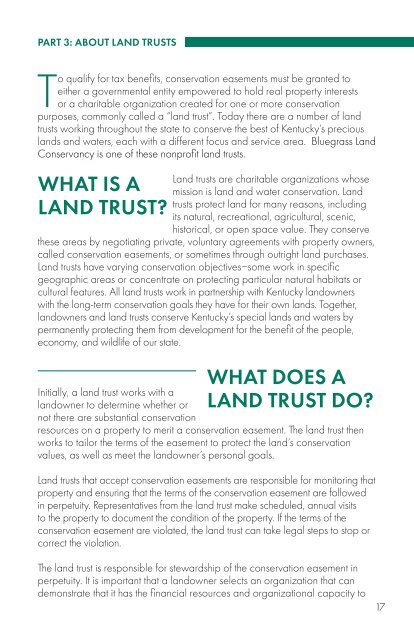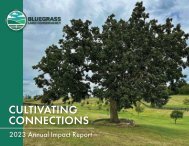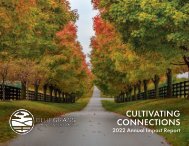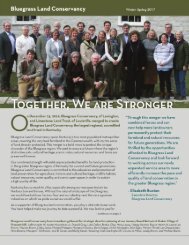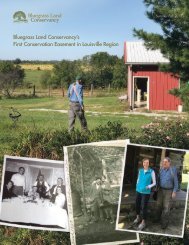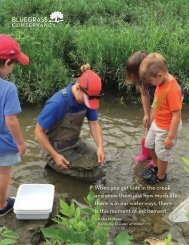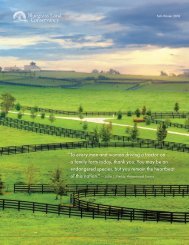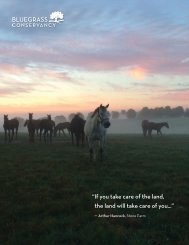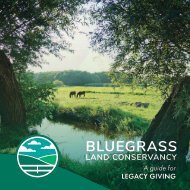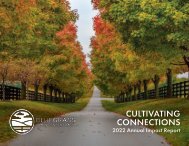BLC Conservation Easement Landowner Guide
A guide for Kentucky landowners: - What is a Conservation Easement? - Financial Benefits of Conservation Easements - About Land Trusts - Frequently Asked Questions - Landowner Stories
A guide for Kentucky landowners:
- What is a Conservation Easement?
- Financial Benefits of Conservation Easements
- About Land Trusts
- Frequently Asked Questions
- Landowner Stories
Create successful ePaper yourself
Turn your PDF publications into a flip-book with our unique Google optimized e-Paper software.
PART 3: ABOUT LAND TRUSTS<br />
To qualify for tax benefits, conservation easements must be granted to<br />
either a governmental entity empowered to hold real property interests<br />
or a charitable organization created for one or more conservation<br />
purposes, commonly called a “land trust”. Today there are a number of land<br />
trusts working throughout the state to conserve the best of Kentucky’s precious<br />
lands and waters, each with a different focus and service area. Bluegrass Land<br />
Conservancy is one of these nonprofit land trusts.<br />
WHAT IS A<br />
LAND TRUST?<br />
Land trusts are charitable organizations whose<br />
mission is land and water conservation. Land<br />
trusts protect land for many reasons, including<br />
its natural, recreational, agricultural, scenic,<br />
historical, or open space value. They conserve<br />
these areas by negotiating private, voluntary agreements with property owners,<br />
called conservation easements, or sometimes through outright land purchases.<br />
Land trusts have varying conservation objectives–some work in specific<br />
geographic areas or concentrate on protecting particular natural habitats or<br />
cultural features. All land trusts work in partnership with Kentucky landowners<br />
with the long-term conservation goals they have for their own lands. Together,<br />
landowners and land trusts conserve Kentucky’s special lands and waters by<br />
permanently protecting them from development for the benefit of the people,<br />
economy, and wildlife of our state.<br />
WHAT DOES A<br />
LAND TRUST DO?<br />
Initially, a land trust works with a<br />
landowner to determine whether or<br />
not there are substantial conservation<br />
resources on a property to merit a conservation easement. The land trust then<br />
works to tailor the terms of the easement to protect the land’s conservation<br />
values, as well as meet the landowner’s personal goals.<br />
Land trusts that accept conservation easements are responsible for monitoring that<br />
property and ensuring that the terms of the conservation easement are followed<br />
in perpetuity. Representatives from the land trust make scheduled, annual visits<br />
to the property to document the condition of the property. If the terms of the<br />
conservation easement are violated, the land trust can take legal steps to stop or<br />
correct the violation.<br />
The land trust is responsible for stewardship of the conservation easement in<br />
perpetuity. It is important that a landowner selects an organization that can<br />
demonstrate that it has the financial resources and organizational capacity to<br />
17


